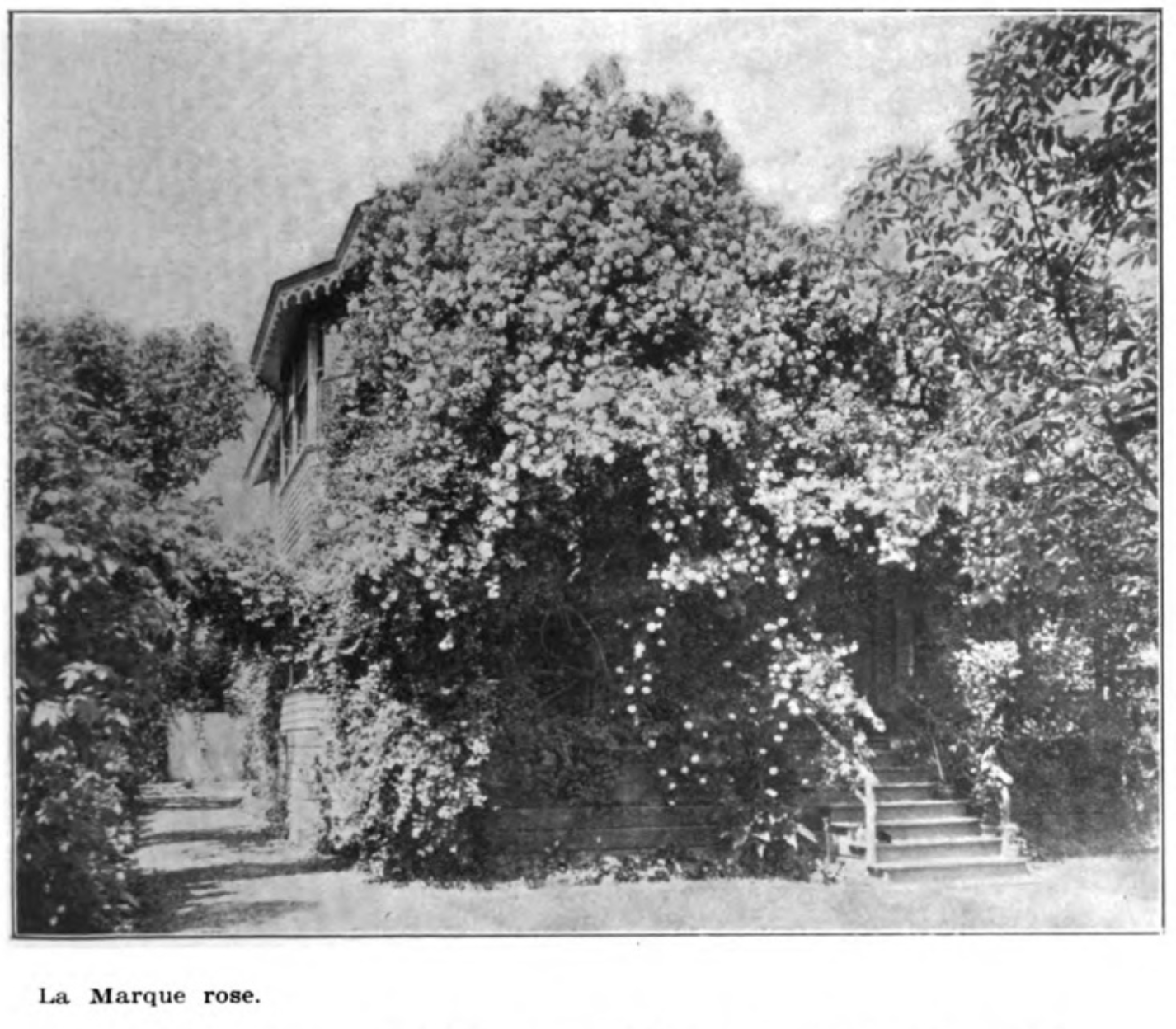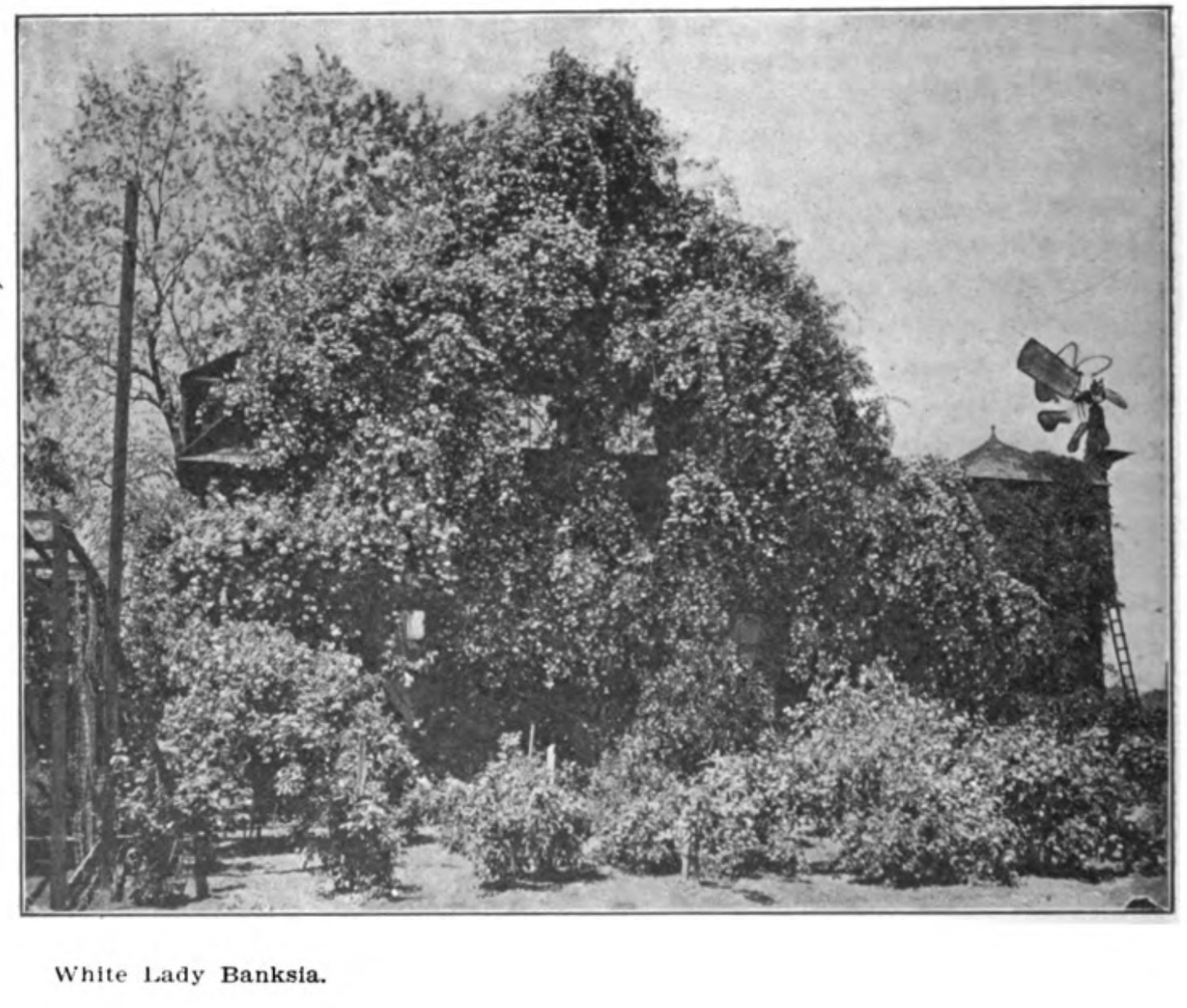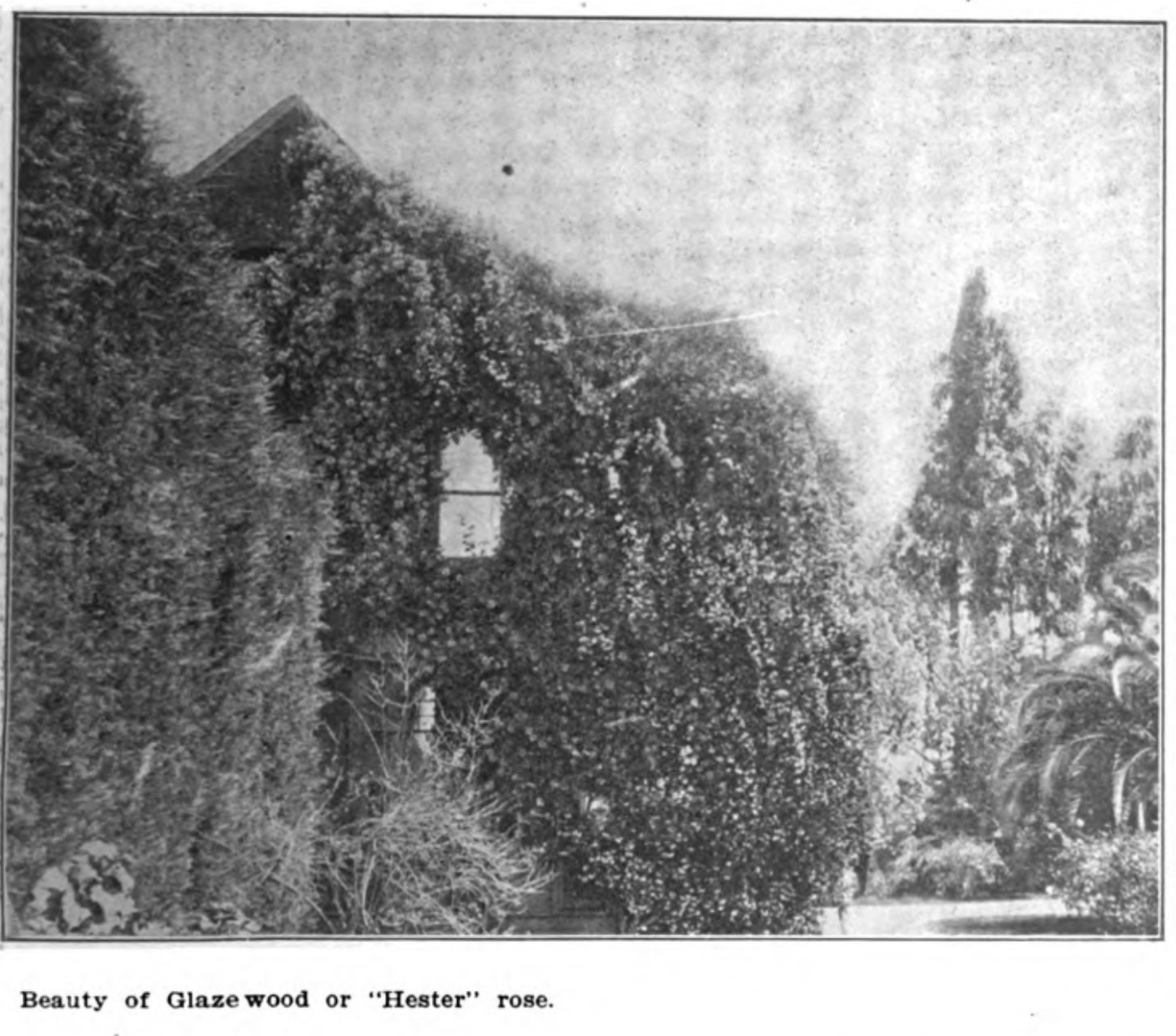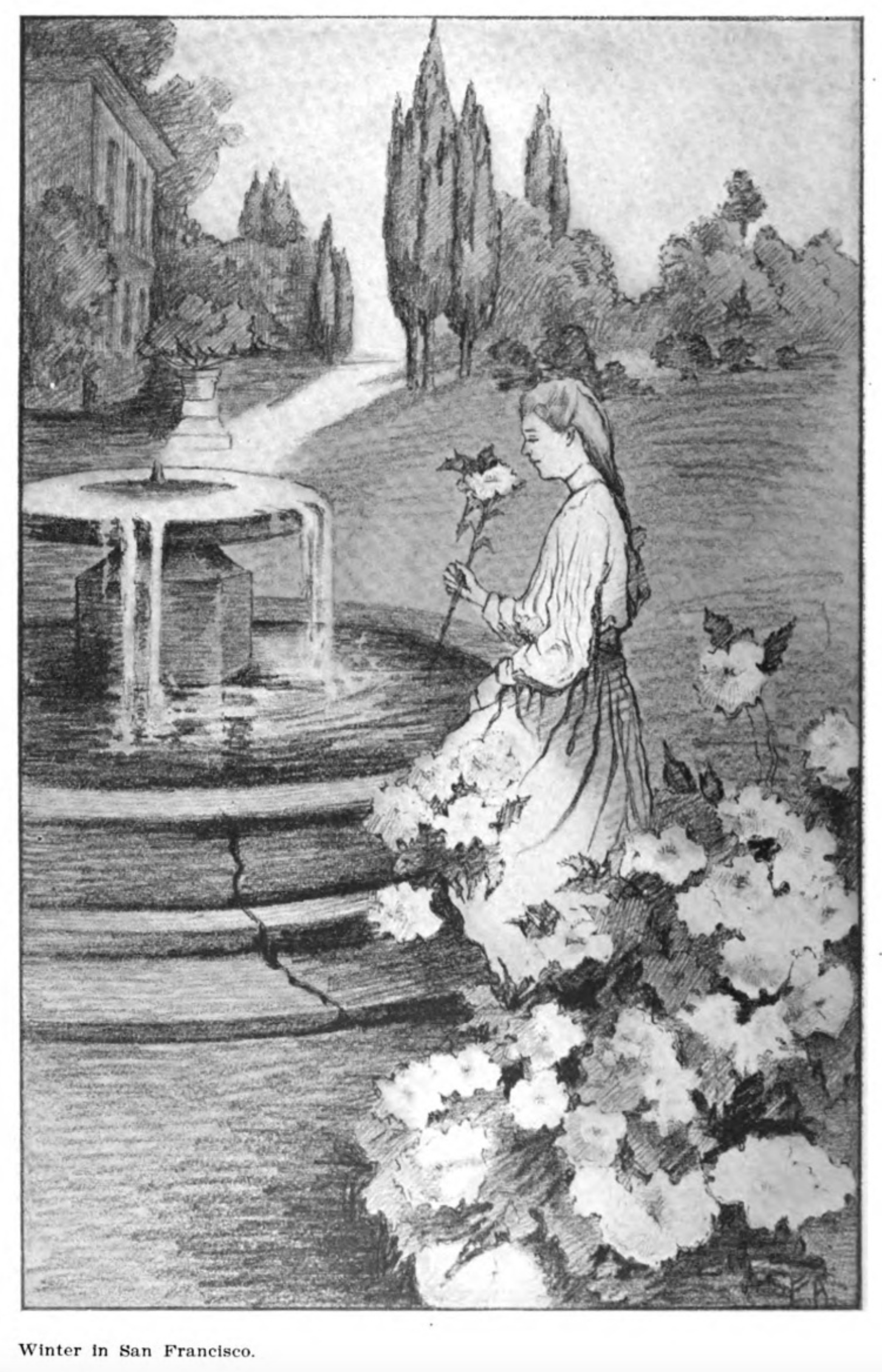|
"But soft! what light through yonder window breaks." The old saying that "when poverty comes in at the door, love flies out at the window" surely could not apply in California, for so beautiful are the doorways, touched by the artist—Nature—that poverty, real poverty, cannot come in, and so exquisite are the windows, and so rare are they with perfumed loveliness, that Cupid could neither fly in nor out, but just remain in the delicious shelter of its floral radiance. It is not such a hardship in this summer land if, for any reason, one must remain indoors, for the air is so balmy that one may always have some windows and doors open, and through them even the weary invalid may catch the rarest vistas of color and bloom, and revel in the myriad delights of the floral world. They are always beautiful, whether seen from the exterior or interior, and are always fragrant and pure. Windows were originally made for the mere admission of light and air, and there was no attempt to convert them into things of beauty. In the second century after Christ, windows were made of horn, and according to some, there are traces of glass windows having been used in Pompeii, but the first indisputable mention of glass windows is made by Gregory of Tours, in the fourth century of our era, who speaks of church windows of colored glass. Glass began to be used in private houses in England as early as 1180, and in France in the fourteenth century. The doorways of the middle ages gave scope to the richest embellishment, being often adorned with sculptured saints and grotesque forms, historical and astronomical. But man’s highest perfection of art is nothing compared to the richness of window and doorway, evolved from the hand of the great artist—Nature—as seen in the perfect clime of California. The love of flowers is inherent in all women and most men. It beautifies life and betters conditions for humanity, bringing forth the nobler part of one’s nature. Every flower is a silent teacher of the doctrine of the beautiful, and where flowers bloom, evil thoughts perish to a great extent, for the two will not easily assimilate. ”Some one had placed upon my window sill a tiny, crystal cup, In California it is always May, and one may look from the window or doorway any day in the whole year and revel in a sea of bloom. If not one blossom, it will be another, for there is never a dearth of flowers, and the vistas from within are always beautiful. The rooms are always scented with the sighs blown from a rose spray, or some of its sweet sisters, for here there is nothing to do but let the soul drink in the sweetness of it all. Winter wears the garb of summer, and nature laughs the glad year round. Looking out from these perfumed doors and windows one may always see the purple outline of mountain and foothill, and flowers of every name and hue, lifting their cups to the tender breeze, while through the lattice comes always the song of birds. In this land the opening of door and window always means the unveiling of a beautiful picture. It may be a palm garden, waving its great fingers; a mass of gorgeous flowers; and old mission, with picturesque red tiling; a glimpse of the blue and dimpled Pacific; a fairy land of fruit and blossom. It may be any of these, and many more; but here the floral goddess is more lavish of her beauties in April and May than at any other time, and it is then that the windows and doorways burst into masses of color and bloom and fragrance. In their leafy bowers the wild-birds nest, feeling secure in their cloistered sanctity, and one may always be thrilled with the melody of their songs. There are all kinds of flowers over doors and windows—the passion flower and clematis, with their starry blossoms; the omnipresent and abundant smilax, with its tender ropes of green; clinging ivy; the heavy, fragrant beauty of heliotrope, which in this climate often shades a veranda fifteen feet from the ground. Hydrangeas, which grow to magnificent height and size; fuschia and ivy geranium; our old-fashioned friends, honey suckle and jessamine. All—all are here, but it is conceded by every one that the queen—the royal queen of window and doorway, is the rose. Of every name and hue, and in vistas of vivid color, they fill the air with their all-permeating fragrance, full of subtle and romantic suggestion. Here the blood red rose, the queen of love, and all her royal retinue, glow beneath the crystalline sunlight. The legends of history interweave the rose with the palmy days of Rome and Greece. The classic revels were incomplete without giving it a prominent position. The ancient Romans called the white rose the "earth star," and decorations in which it prevailed always gave a hint of silence. Also in the fabulous receptions given to Mark Antony, the grand salon was carpeted with roses, eighteen inches deep—a votive offering of the bloom of Love. Nero expended a hundred thousand dollars for roses to decorate a single feast, and the classic laurel a chaplet of roses, crowning poets, orators and victors. And so, life passed in a perfect climate, where love and gentleness have draped window and doorway with their perfumed beauty and have hung their satin banners upon the outer walls, must partake of their sweetness and purity to some extent, and receive the impress of such environment. The poetic element is not wanting in any of these rose garlanded entrances, for here beauty is a birth-right, and her kingdom a perennial one. This floral beauty is far superior to architectural, for it grows in silence, and is fashioned without sound of the hammer. Only one thing we lack, if lack it can be called. We have no "last rose of summer." Perhaps for that reason we may sometimes fail to appreciate the completeness and perfection of our blossom-crowned doorways and windows in this world of roses. |



